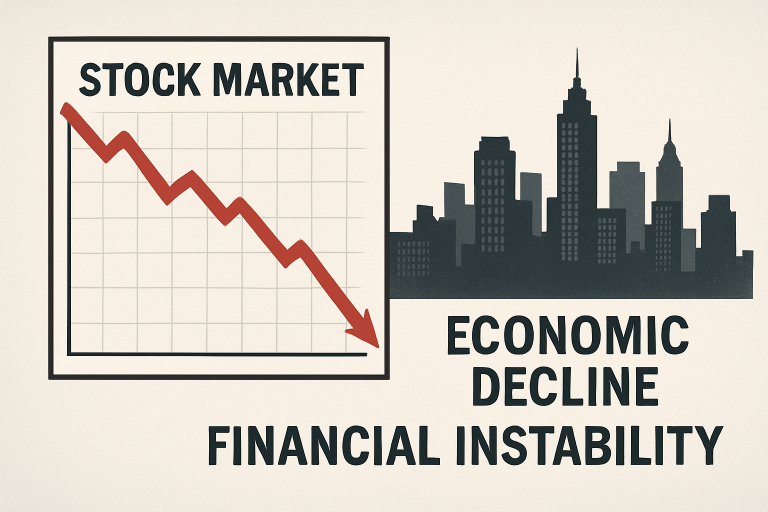Home Business Magazine Online
Key Takeaways:
- Understanding the causes and impacts of the 2008 financial crisis.
- Exploring the role of government interventions in economic recovery.
- Identifying strategies to mitigate future financial downturns.
Introduction
The 2008 financial crisis marked a watershed moment in modern economic history, sending shockwaves through financial systems worldwide. For policymakers, economists, and the public, understanding the critical events leading up to the crash offers important lessons for safeguarding our future. Closely examining in-depth interviews and analyses, such as those of Peter Orszag, can provide unique insights into the complexities of crisis management and economic recovery during turbulent times.
Global markets faltered as institutions failed, prompting governments and central banks to spark unprecedented rescue efforts. The ripple effects revealed vulnerabilities in even the most robust economies, underscoring the necessity for rigorous regulatory frameworks, risk management, and international cooperation.
Causes of the Financial Crisis
The underlying causes of the 2008 financial crisis were deeply intertwined, stemming from both macroeconomic trends and the decisions of individuals and institutions. Central to the meltdown was the proliferation of subprime mortgages—loans extended to borrowers with lower creditworthiness during a period of rapidly rising property values. As more Americans sought homeownership, banks and financial intermediaries began to bundle these risky mortgages into complex financial instruments called mortgage-backed securities (MBS) and collateralized debt obligations (CDOs).
Financial institutions underestimated the risks embedded in these securities, influenced by the belief that housing prices would continue to rise. Regulatory oversight lagged behind market innovation: gaps in the regulatory framework allowed excessive leverage and risky practices to go unchecked. The eventual bursting of the housing bubble triggered defaults, eroding investor confidence and leading to the collapse of key institutions like Lehman Brothers, freezing credit markets globally.

Impact on the Global Economy
The financial crisis quickly transcended national borders, pushing the world economy into the deepest recession since the Great Depression. Global GDP contracted sharply, accompanied by double-digit unemployment rates in many countries. Plummeting asset values wiped out trillions in household and pension wealth, while confidence in the stability of banks eroded rapidly. Emerging economies, which relied heavily on exports and foreign investment, suffered severe economic shocks as global demand collapsed. Social systems faced mounting pressure as layoffs and foreclosures soared, emphasizing the human costs of financial instability.
The sudden halt in credit availability had profound ripple effects on sectors beyond finance, stalling growth in manufacturing, retail, and other major industries. These impacts were felt unevenly, but the crisis ultimately demonstrated how interconnected and fragile the global financial architecture had become. The International Monetary Fund (IMF) has published extensive research on how different countries were affected, further highlighting the crisis’s global reach.
Government Interventions
In response to the unfolding disaster, governments and central banks launched dramatic interventions to prevent total collapse. The United States, for instance, passed the Emergency Economic Stabilization Act, creating the Troubled Asset Relief Program (TARP) to inject capital into failing banks. The Federal Reserve slashed interest rates to near zero and implemented quantitative easing to promote liquidity and restore confidence in the markets.
Other advanced economies followed suit, designing stimulus packages and bank bailouts tailored to their specific circumstances. These efforts, while controversial, were credited with stopping the panic and averting an even more significant collapse. International bodies like the Group of Twenty (G20) gathered for rapid coordination to ensure a unified response, reflecting how global cooperation proved essential to stabilizing financial systems. To understand the scale and implications of these interventions, The Guardian details the policy measures and their impacts in their policy overview on the financial crisis.
Lessons Learned
Importance of Effective Regulation
The crisis revealed that unchecked financial innovation and insufficient supervision can sow seeds of systemic risk. Stricter lending standards, greater transparency in financial markets, and rigorous capital requirements have since become central to new regulatory regimes, including the Dodd-Frank Wall Street Reform and Consumer Protection Act in the U.S.
Dangers of Excessive Leverage
Financial institutions and households alike learned the perils of borrowing beyond their means. The collapse of overleveraged banks underscored the necessity of prudent balance sheet management at every level of the economy.
Global Interconnectedness
The speed and severity of contagion highlighted that risks in one country can quickly spill over to others. Governments and regulators now better appreciate the importance of cross-border financial oversight and crisis management protocols.
Strategies for Future Prevention
As economic actors and regulators reflect on the crisis, a number of strategies for mitigating future downturns have emerged. Chief among them is the continuous strengthening of national and international regulatory architecture to prevent the buildup of systemic risks. Enhancing risk management and stress testing within institutions helps identify vulnerabilities early. At the same time, comprehensive consumer protection laws ensure that households are not exposed to predatory lending or financial products they don’t fully understand.
Financial literacy must be promoted widely, empowering individuals to make sound decisions about borrowing, investing, and saving. At the governmental level, policies encouraging transparency—both in markets and in the structure of financial products—can further shield economies from the worst effects of inevitable downturns. As demonstrated in global summits and collaborative research from organizations such as the IMF, international cooperation remains essential in today’s interconnected world.
Conclusion
The 2008 financial crisis stands as a stark example of the complexities and vulnerabilities embedded in the modern global financial system. It serves as a reminder of the crucial importance of learning from past mistakes and implementing robust strategies to fortify economic structures against future shocks. By fostering an environment of transparency, responsible risk-taking, and international cooperation, we can lay the groundwork for lasting resilience and prosperity.
The post Lessons from the Financial Crisis: Navigating Economic Turmoil appeared first on Home Business Magazine.





